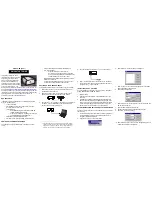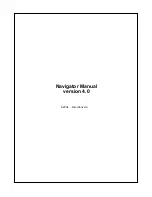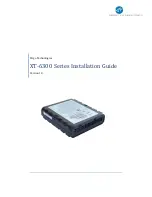
Nesis III User’s Manual
12.1
Intended Use
12.1
Intended Use
The autopilot is designed to help a pilot in stable, controllable flight conditions
during cruising. If such conditions are met, the autopilot can be engaged to
take some relief from the pilot, who can perhaps focus a bit more on ATC
communication or to do some navigation task. Nevertheless, it is still pilot’s
responsibility to monitor the autopilot and airplane behavior all the time.
12.2
Operation Limitations
Always respect the following limitations.
•
The autopilot shall be only used in VFR (Visual Flying Rules) condi-
tions.
•
Information from the Aircraft Operating Handbook always supersedes
information given in this manual.
•
The autopilot is designed to be used only in cruising conditions. It will
not work at low and high speeds. It can’t fly approaches and departures
and it can’t do takeoffs and landings.
•
The autopilot shall not be used in turbulence.
•
Do not use the autopilot with flaps extended.
•
In any case of abnormal activity, the autopilot must be deactivated and
the pilot must take over the commands immediately. Never wait for
autopilot to deactivate itself automatically.
•
Autopilot does not use any information from Magu (magnetic compass).
12.3
System Description
Autopilot system shown on Figure 85 consists of Nesis, power supply switch
and two or more servo motors units called
Seru
. All these units are connected
via CAN data bus which enables the communication between them. The
Nesis is used for autopilot control and configuration.
The Seru units are
servo-motors which are moving the aircraft control surfaces. Power switch is
used to cut the power to the servo motors – this quickly disables servo motors
and frees the aircraft commands. It is also possible to install a quick autopilot
disable switch which can be placed on the command stick of the airplane.
117
©
Kanardia
2018-2022
















































